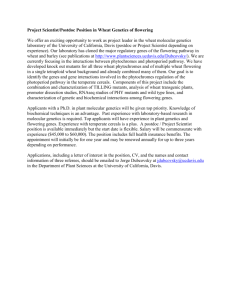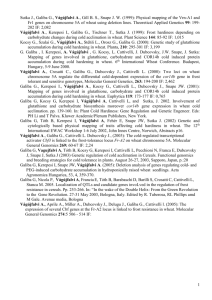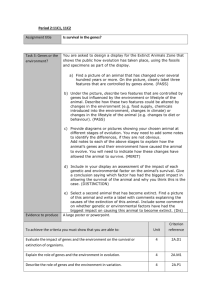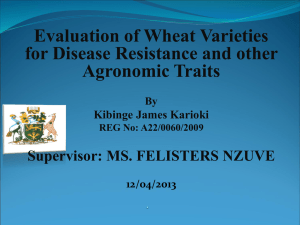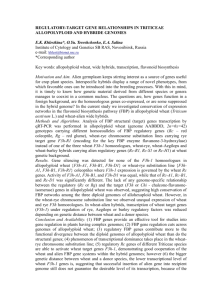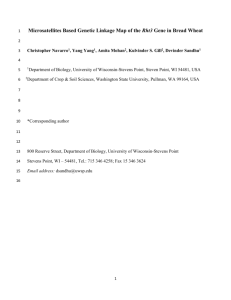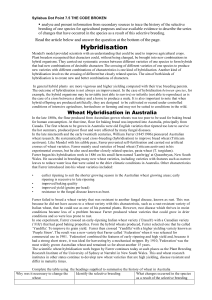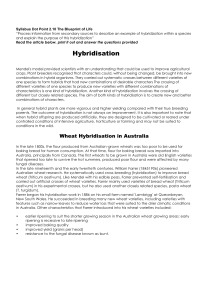Detection of Some Resistance Genes (Bt-5, Bt-8, Bt-10, Bt
advertisement
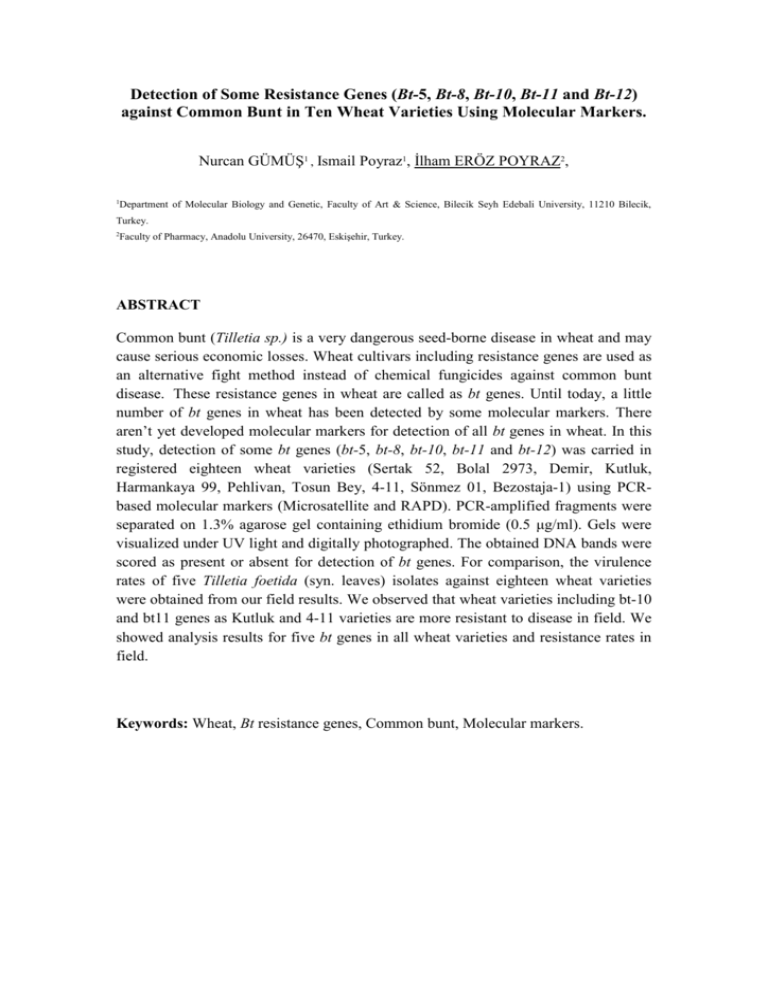
Detection of Some Resistance Genes (Bt-5, Bt-8, Bt-10, Bt-11 and Bt-12) against Common Bunt in Ten Wheat Varieties Using Molecular Markers. Nurcan GÜMÜŞ1 , Ismail Poyraz1, İlham ERÖZ POYRAZ2, 1 Department of Molecular Biology and Genetic, Faculty of Art & Science, Bilecik Seyh Edebali University, 11210 Bilecik, Turkey. 2 Faculty of Pharmacy, Anadolu University, 26470, Eskişehir, Turkey. ABSTRACT Common bunt (Tilletia sp.) is a very dangerous seed-borne disease in wheat and may cause serious economic losses. Wheat cultivars including resistance genes are used as an alternative fight method instead of chemical fungicides against common bunt disease. These resistance genes in wheat are called as bt genes. Until today, a little number of bt genes in wheat has been detected by some molecular markers. There aren’t yet developed molecular markers for detection of all bt genes in wheat. In this study, detection of some bt genes (bt-5, bt-8, bt-10, bt-11 and bt-12) was carried in registered eighteen wheat varieties (Sertak 52, Bolal 2973, Demir, Kutluk, Harmankaya 99, Pehlivan, Tosun Bey, 4-11, Sönmez 01, Bezostaja-1) using PCRbased molecular markers (Microsatellite and RAPD). PCR-amplified fragments were separated on 1.3% agarose gel containing ethidium bromide (0.5 μg/ml). Gels were visualized under UV light and digitally photographed. The obtained DNA bands were scored as present or absent for detection of bt genes. For comparison, the virulence rates of five Tilletia foetida (syn. leaves) isolates against eighteen wheat varieties were obtained from our field results. We observed that wheat varieties including bt-10 and bt11 genes as Kutluk and 4-11 varieties are more resistant to disease in field. We showed analysis results for five bt genes in all wheat varieties and resistance rates in field. Keywords: Wheat, Bt resistance genes, Common bunt, Molecular markers.

